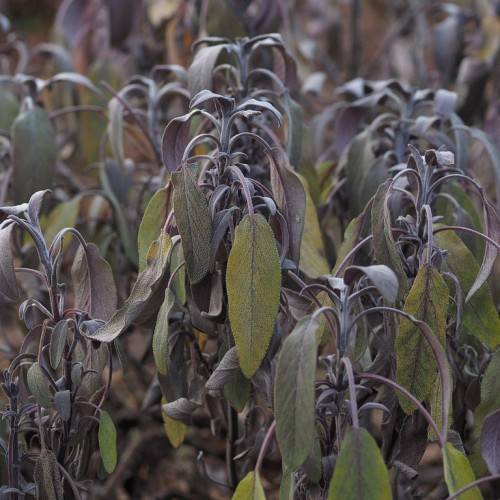
common sage
Salvia officinalis 'Purpurascens'
Cycle:
Herbaceous Perennial
Watering:
Minimum
Hardiness Zone:
6 - 9
Flowers:
Flowers
Sun:
Full sun
Soil:
Rocky , gravelly , dry
Fruits:
Fruits Ready In Fall
Leaf:
Yes
Growth Rate:
High
Maintenance:
Moderate
Drought Tolerant:
Yes
Salt Tolerant:
Yes
Care Level:
Medium
watering
Common sage should be watered when the top inch of soil is dry. Overwatering can cause root rot, so be sure to always check soil moisture before adding more water. The amount of water to give to common sage depends on the type of soil it's planted in, as well as the size of the container in which it's planted. For example, if planted in clay soil, it should be given more water than if planted in sandy soil. For plants growing in medium to large size pots, give the plant 1 to 1.5 inches of water every week to 10 days. For small pots, water more frequently, but less intensely, with about a quarter inch of water every 3 to 5 days. Additionally, consider applying 1 to 2 inches of organic mulch around the plant to keep the soil moist and reduce evaporation.
sunlight
Common sage (Salvia officinalis 'Purpurascens') should be grown in a spot which receives 6 to 8 hours of direct sunlight every day, preferably in the morning. Plants grown in too little light may become leggy and not produce the number of flowers desired. During the hottest part of the summer, you should move the plants into a more shady position to help protect them from the heat.
pruning
Common sage (Salvia officinalis 'Purpurascens') should be pruned yearly in early spring. Pruning should be done to keep the plant from becoming overly woody, as well as to prevent any potential overgrowth. Begin by lightly pruning the top of the plant by about 10 inches, removing any dead or diseased branches. Then, prune back any branches that are growing too long or crossing over each other. Be sure to avoid pruning too heavily as this can shock the plant and cause it to suffer. Lastly, prune off any old flower heads as this will encourage new growth and blooms. This routine should be performed each spring for optimal health and vigor.
